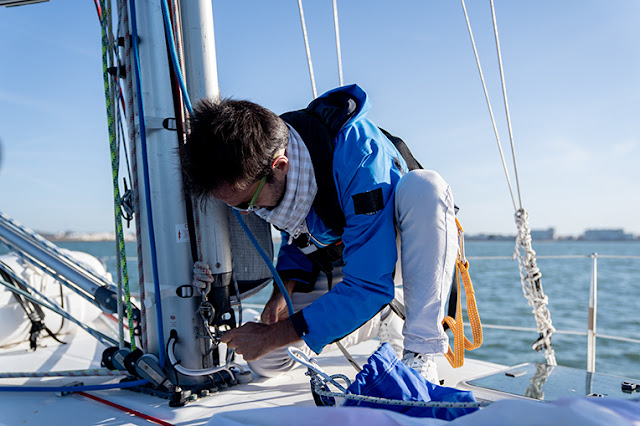Sailing Knots That Every Sailor Should Know About.
Types of knots fall into three general categories. The first are those that are often referred to as "knots" and are knotted at the end of a line. The second category includes those that are used to connect two lines. The last group is those that secure a line to a cleat, piling, or stanchion. You should be knowledgeable of these knots by learning sailing from the unique sailing boat club in San Diego.

There are seven essential knots while sailing :
Bowline- The bowline is the most helpful knot on a sailboat. It is typically used to secure sheets to the clew of a headsail and provides a fixed noose at the end of a line that cannot run or slip.
Stopper Knot- A knot should be tied at the end of a line to keep it from pulling through a block or rope clutch. The double overhand stopper knot, sometimes known as the stopper knot for short, is the most secure knot for this.
Clove Hitch- This knot is useful because it can be tied fast. It's most commonly used on sailboats to secure fender whips to a lifeline, stanchion base, or toerail.
Sheet Bend- While tying two lines together, many sailors employ a square knot, however, they tend to come free when not in use. When two lines of uneven diameter need to be tied together, the sheet bend is more secure, easier to untie, and performs considerably better.
Two Half Hitches- This hitch is ideal for tying a line firmly around an object. It's a great way to secure a dock line to a piling when combined with a circular turn.
Rolling Hitch- When riding turns jam a line on a winch drum, the rolling hitch comes to the rescue. This hitch is made to stay put. Tie a rolling hitch on the standing piece of a jammed line with an extra line, shift the load to the extra line, and the jammed line will be freed.
Cleat Hitch- A proper cleat hitch is simple to tie, highly effective, and may be released while under weight without risking losing a finger. This is the knot to use for securing a line to a cleat, a dock, or a deck.



Comments
Post a Comment